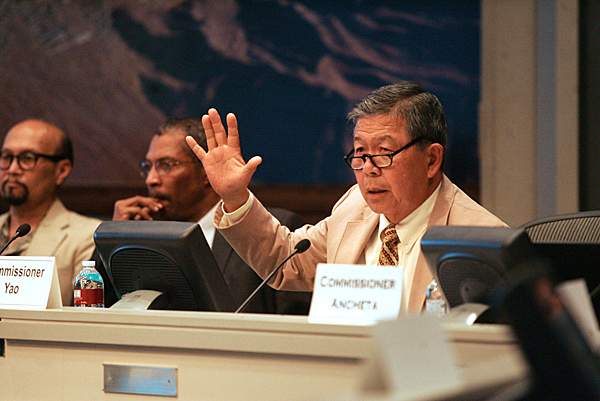Citizens redistrict California in a more democratic, transparent manner

For far too long, California political districts have been created by whoever was in power. Oddly-shaped gerrymandered districts carved out safe areas for the party in control. Loyal members got safe districts, making it easy to get re-elected. Maverick politicians were doled out less safe areas.
In 2000, a deeply cynical deal was worked out where both parties got districts that were mostly safe for them. This behind-closed-doors deal appeared to be anti-democratic to the core. It seemingly ensured that one party will almost always get elected in a particular area while the opposition party, third parties, and Independents are effectively voiceless. Such a stifling and closed system leads directly to cronyism, since both parties can prevent any unwanted outsiders from entering the system. The current gridlock in California government is likely a direct result of this phenomenon, since legislators don't have to worry much about getting re-elected.
2008's Proposition 11 has changed all of that, however. It mandates that redistricting - which occurs every ten years after national census results are tabulated - will be done by a committee of 14 citizens and not by politicians making a backroom deal. Citizens apply to be on the committee, and the Bureau of State Audits narrows the lists down, then submits it to the legislature, who can remove up to 24. So, for the first time ever, average citizens were allowed to participate in creating the political districts.
They took their responsibilities seriously and were quite transparent in the process. Reports can be viewed on their website, wedrawthelines.ca.gov. They held 23 hearings throughout the state and heard spoken testimony from 1,500 participants, as well as receiving feedback via the website. Their guidelines were clear (from their FAQ.):
Districts must be of equal population to comply with the US Constitution.
Districts must comply with the Voting Rights Act to ensure that minorities have an equal opportunity to elect representatives of their choice.
Districts must be contiguous so that all parts of the district are connected to each other.
Districts must respect the boundaries of cities, counties, neighborhoods and communities of interest, and minimize their division, to the extent possible.
Districts should be geographically compact, that is, have a fairly regular shape.
Where practicable, each Senate District should be comprised of two complete and adjacent Assembly Districts, and Board of Equalization districts shall be composed of 10 complete and adjacent State Senate Districts.
Districts shall not be drawn to favor or discriminate against an incumbent, candidate, or political party.
Last Friday, the Citizens Redistricting Commission released the first draft of the redistricting, and it has subsequently requested feedback. The final plan goes into effect on August 15. In the press conference, the members specifically stated that they want to work against entrenched incumbencies and gerrymandering, which makes for a "chilling effect" on democracy.
So, did one party win or lose in the redistricting?
Most say the Democrats eked out gains. But, California is a heavily Democratic state to begin with. New voter registration by immigrants may have tilted several districts more Democratic. The key question is, will the Democrats be able to get a 2/3's majority in both houses in 2012? If so, then Republicans become irrelevant as they would no longer be able to block budget votes. However, others think Republicans may end up doing okay.
The committee appears to have done its job well. Districts are now more logical and fair, and the entire process seems to have been conducted in an open manner. This was a good day for democracy in California.




